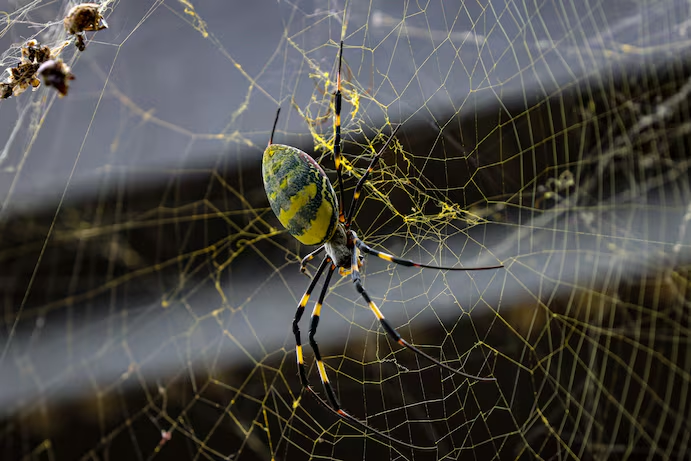Huge Joro spiders are ravaging The East Coast. Don’t worry, they’re shy.
Frances Vinall
on 05/06/2024
As summer arrives, so do the Joro spiders. The huge arachnids, native to Asia and slowly advancing in the United States, spend winter as eggs before they become difficult to miss through the warmer months: the females growing to three to four inches, their bright yellow bodies streaked with black, spinning extensive gold-toned webs. (The males are smaller and brown.)
The species is spreading since its first appearance within the United States about a decade ago in Georgia and is likely to spread further across the East Coast in coming years.
However, experts advise that people living in New York and Delaware should remain calm if they happen to come to see something unexpected The arachnids appear cautious and appear more frightening than they really are.
The place do Joro spiders originate from, and why do they spread?
Joro spiders are natives of Japan, China, Korea and Taiwan. It is believed the fact that these spiders were shipped into in the United States on a shipping container.
A total of 60 nonnative species spiders have been identified throughout North America, a 2015 study published from the peer-reviewed journal PeerJ found. They are often able to take advantage of items that are not noticed due to their “secretive behavior,” the authors wrote.
Since its first appearance in around 2014 around 2014, the Joro spider is believed to have gained a foothold in the northeast and north-central regions of Georgia and northeast Georgia, as well as in the adjacent regions in Tennessee as well as South Carolina. The spiders have been observed within Forsyth, Ga., and Baltimore as well as an odd observation at the state of Oklahoma by 2021.
East Tennessee State University researchers in the past wrote that the Joro could be spread north, due to its cold tolerance in addition to stating that “plentiful suitable habitats favor a an effective North American invasion.”
The species is able to thrive in urban ecosystems, and it isn’t bothered by the traffic jams, which is a stark contrast to the majority of its American relatives according to according to a University of Georgia study published in February discovered.
“They make their golden webs on power lines, over stoplights and even on top of the pumps at local gasoline stations — all of which are peaceful places,” the university said in a press release on the research, noting its toughness has helped to multiply it into millions across the state.
Are Joro spiders venomous?
Technically speaking, they are most spiders, however their fangs aren’t designed to cut human skin. They’re also one of some of the “shyest” in spiders, as another University of Georgia study discovered in the past. They are said to freeze, and stay inactive for an hour if they are threatened by an unintentional disturbance.
Richard Hoebeke, associate curator at the University of Georgia Collection of Arthropods, told The Post in 2022 that he had been aware of only a handful of incidents where Joro Spiders choking humans. In one instance the bite caused swelling, redness, and a slight fever. It could have resulted from allergies. The doctor advised for the scorpion to “not be bitten with the fingers of your hands.”
Do Joro spiders fly?
However, its species is proficient in “ballooning,” two studies discovered in 2011. Ballooning is an activity that is displayed by various spider species, especially in the early stages of their development and particularly light. It involves Arachnids that shoot threads into the air that are attached to their bodies. They are caught by the winds, which carry them to another location.
How do they look?
Joro spiders aren’t thought to pose a threat to humans, other than the fact that they build their webs in areas that cyclists and pedestrians can accidently plow into them.
There is a lot of debate about how their impact could drive away native species. David Coyle, assistant professor of environmental conservation and forestry in Clemson University, made the comment in October, after releasing research on the subject that native spiders didn’t appear to be present in areas with an over-representation in Joro spiders.
“These are threatening native species, and they are catching and killing everything that can become caught up in their webs” the official said in an announcement.
However, Andy Davis, who co-authored the University of Georgia studies, stated in a press release that the studies appear to have no influence on the local food web or ecosystems. Others have urged more study.
A few Georgians have fallen in love with their new neighbors, and have even having an Facebook website dedicated to this “captivating” animals.










